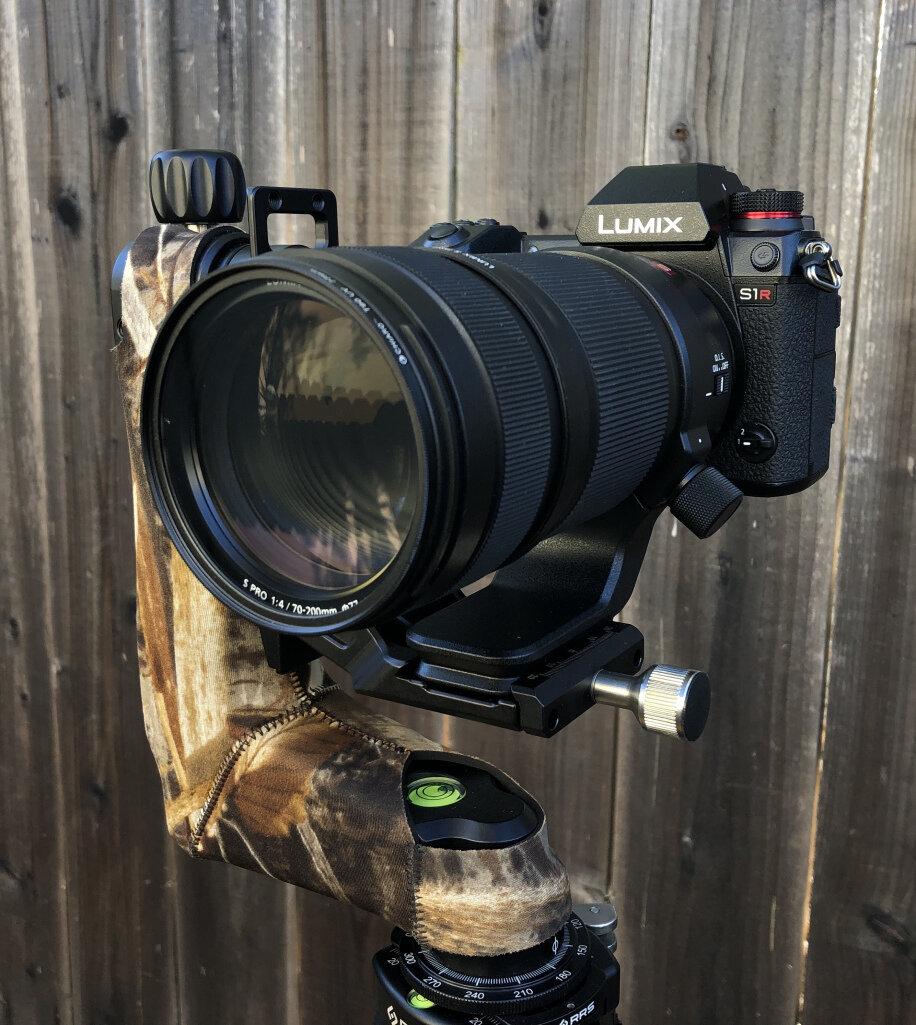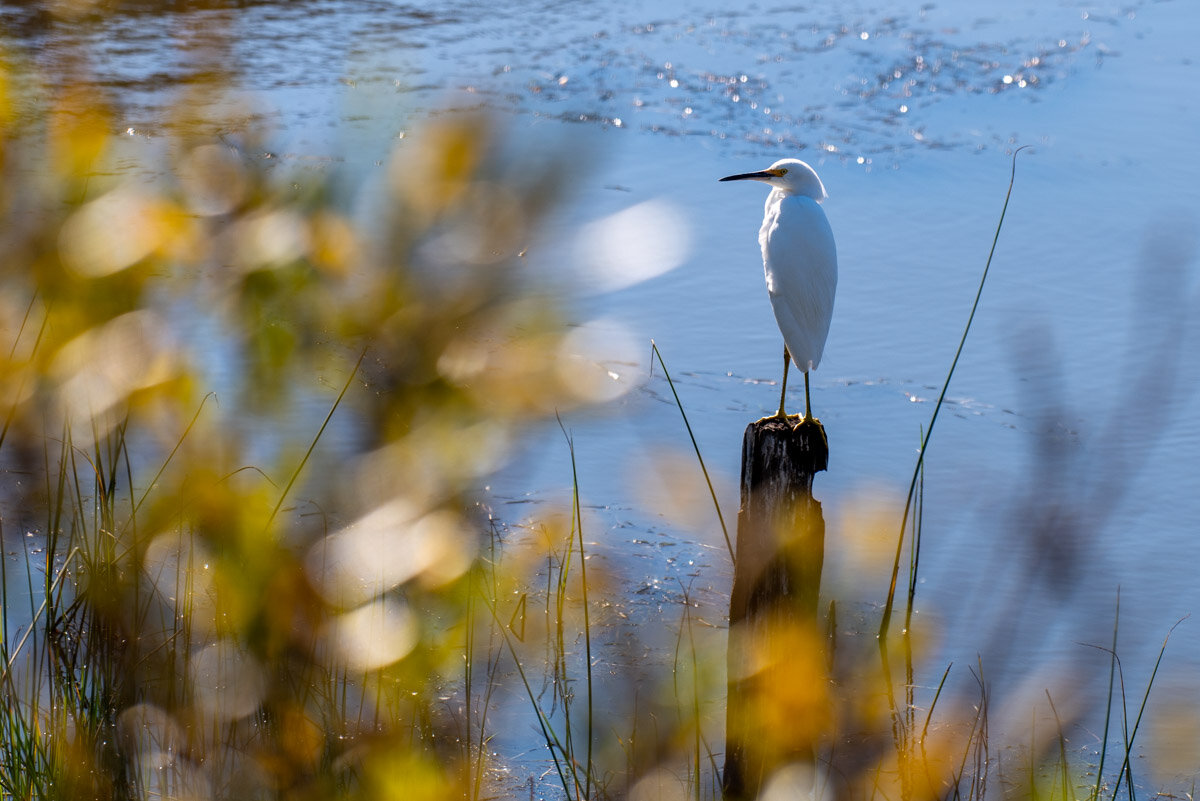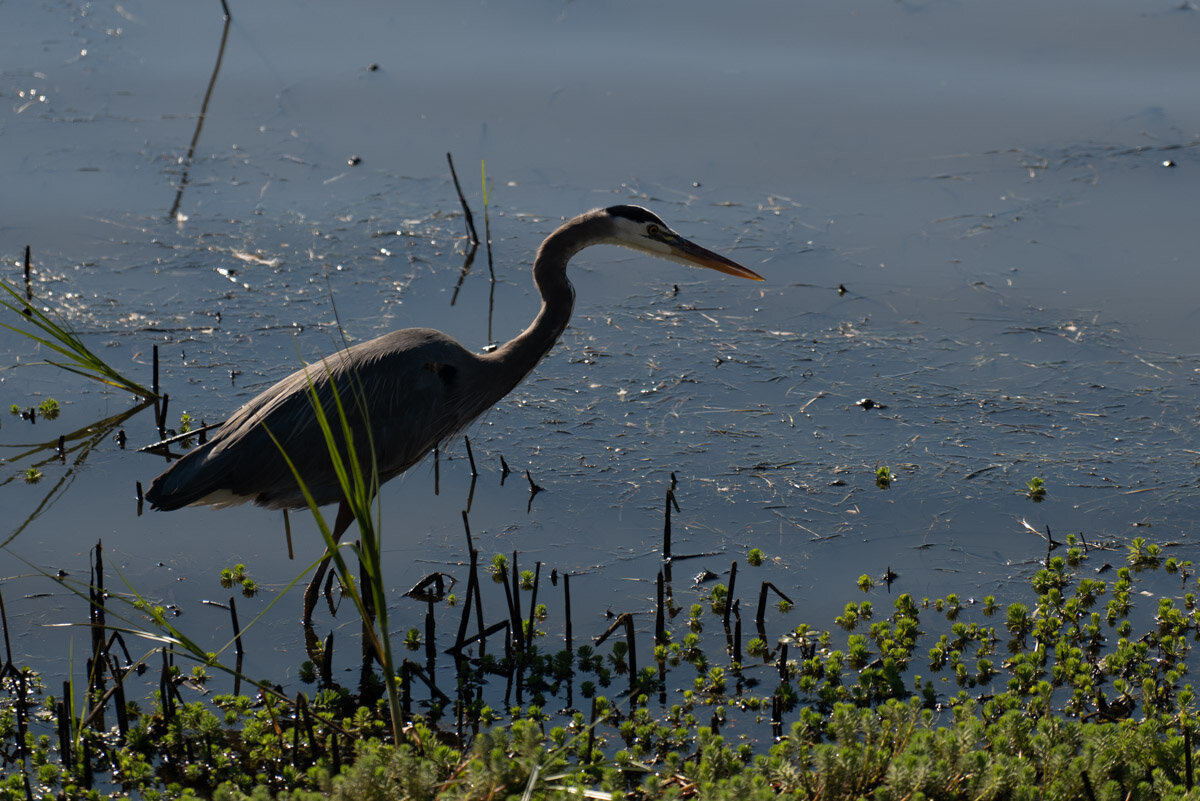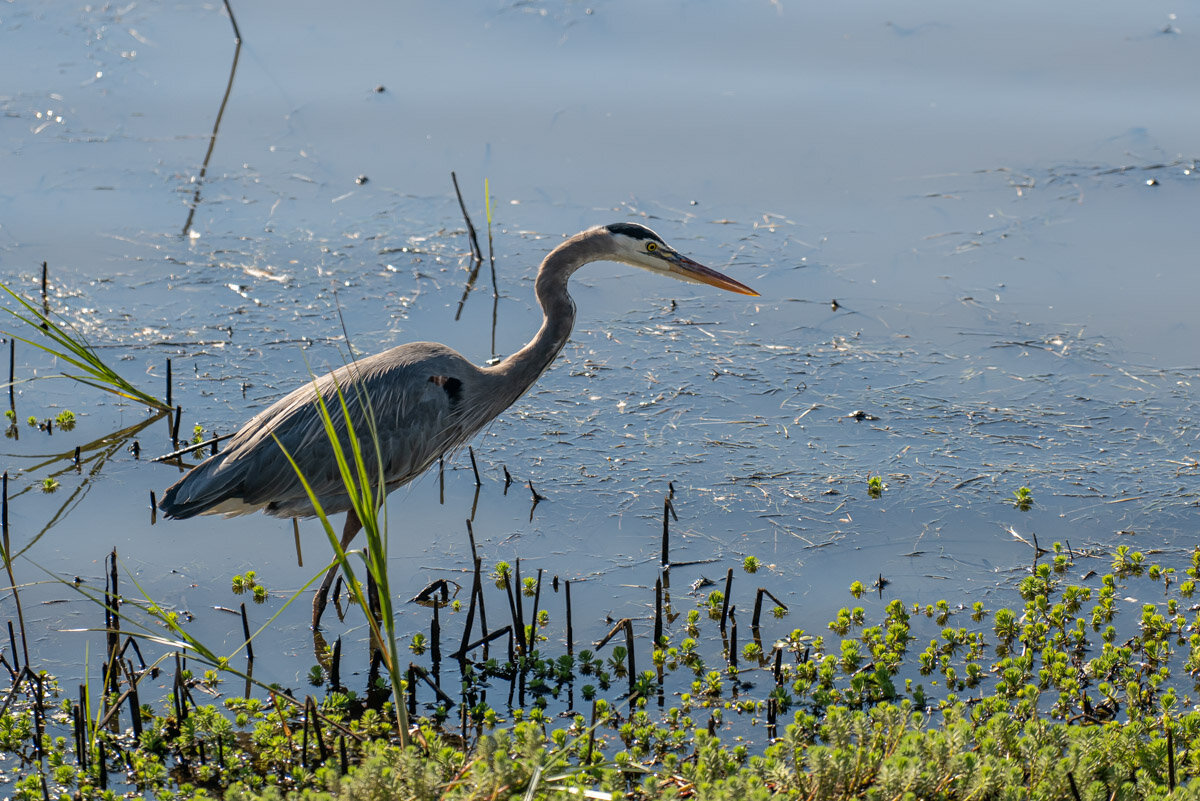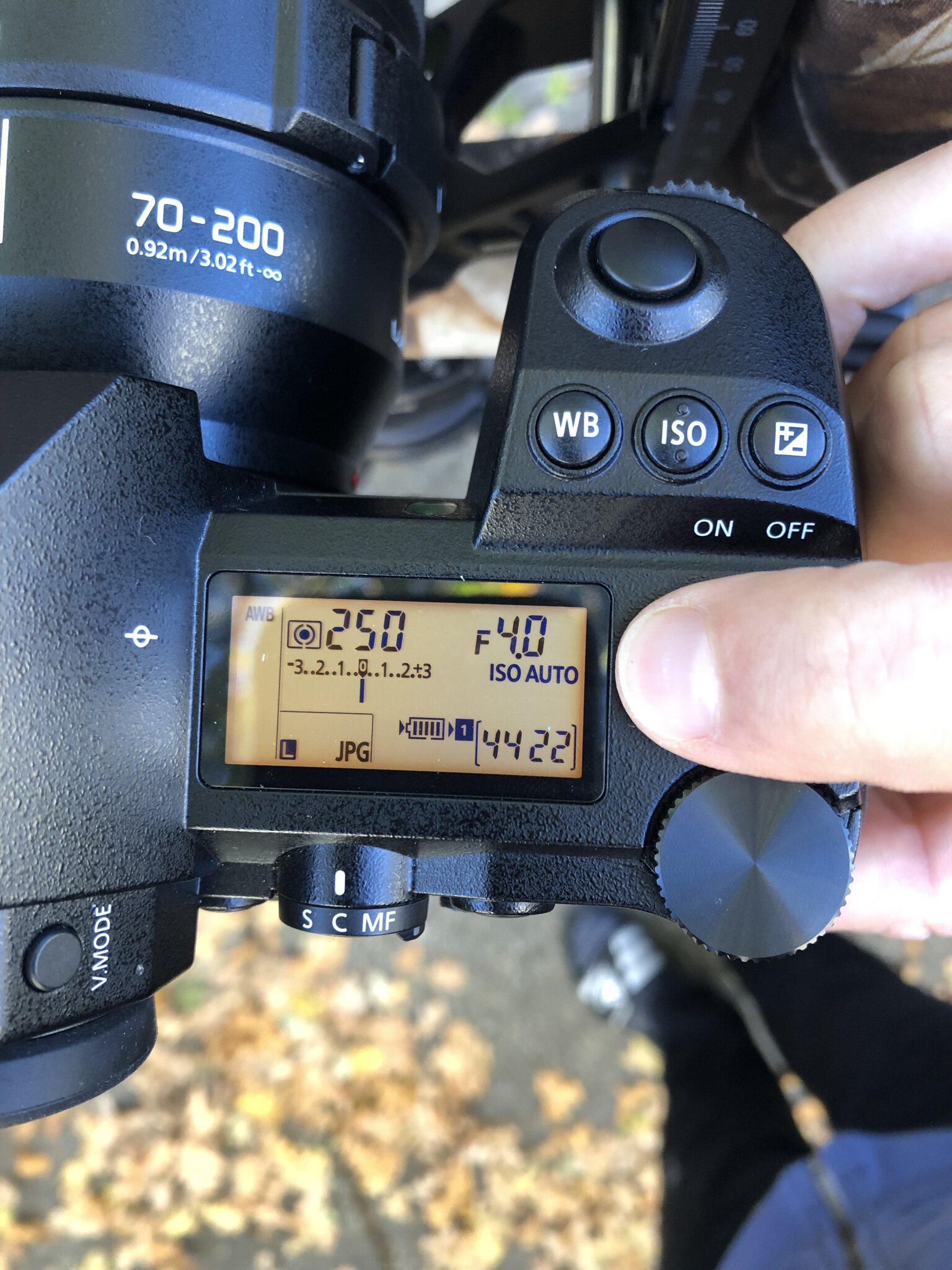Panasonic S1R Review: A Wildlife Photographer’s Perspective
Can it handle BIF (Birds in Flight)? Why yes, it certainly can.
The first reaction I had when handling the S1 and S1R for the first time at a local camera event earlier this year was “wow, these cameras are large and heavy”. The S1 and S1R are a hair smaller than my Nikon D850 dimensionally, but also over 200 grams heavier. The Panasonic S cameras are therefore considerably larger than most other full frame mirrorless cameras, and the system’s lenses are, in general, as heavy or heavier than comparable DSLR lenses. This didn’t stop me from wanting to try one.
For some, the weight of Panasonic’s new full-frame system goes against the mirrorless camera ethos that Panasonic itself largely started with the DMC-G1, the first mirrorless camera with which they originally marketed more compact camera bodies and lenses as the primary advantage over DSLRs. There is no denying that total bulk and weight of the S system was not the highest priority for Panasonic this time around, since the system is as heavy or heavier than a pro-DSLR kit. If I had to guess, it would be that Panasonic prioritized having solidly built system as possible, and needed a larger camera to make room for a best-in-class sensor stabilizer and to provide proper heat dissipation.
Say hello to the beast.
As a nature and wildlife shooter, having a large and heavy camera can be a challenge in the field. I have often hiked for over five miles in the field with heavy gear, and having to carry more weight is never a good thing. For me, a larger camera encourages the use of a monopod with telephoto lenses, thus adding even more weight to the equation. In this situation, it’s hard not to compare full frame gear to micro-four thirds gear or fuji APS-C gear where you can easily hand hold the kit all day, and where adding a few more lenses to your day bag is inconsequential. The reality of taking a full-frame camera in the field means leaving more gear behind or sucking it up and hauling a bunch of weight. Whether it’s worth it is a personal decision based on one’s physical abilities and desires.
Locking PASM dial on the left, shoulder LCD, WB, ISO, Exposure Comp, On-Off, and shutter/aperture dials on the right.
I’m compelled to think that for me, in some situations it is worth it to bring the extra weight. As a D850 owner, I’ve witnessed tangible benefits of a larger sensor format in low-light conditions that I often find myself in (e.g., under a dark forest canopy, or shooting during dusk and dawn). Full-frame is also the best when it comes to having the most dynamic range and ability to crop the images in post. Although micro-four thirds is no slouch in low light – given the amazing image stabilization offered by Olympus and Panasonic mu43 bodies – I’ve found that low-light shooting with micro four-thirds is best reserved for static subjects. With micro four-thirds, the image starts to fall apart at higher ISOs, whereas I can push the ISO on a full-frame and still get acceptable results. Although the D850 excels in this regard, I get a lot of enjoyment out of the experience of using a mirrorless camera. With this in mind, I have been renting and testing various full-frame mirrorless offerings, and I thought it would be good to share some first impressions.
Ergonomics and Build
One would hope that all of that extra weight of the Panasonic S-series cameras leads to optimal durability, functionality and ergonomics, and I am inclined to think that it does. The S1R is one beast of a camera. It’s not particularly pretty to look at – it has a very industrial feel and look. It nonetheless feels quite robust, with solid hinges on the memory card door and LCD, large, tactile buttons, a very positive feel to the mode selector dial, and a beefy grip. Everything about the camera feels solid. The grip shape may be too large for the smallest of hands – particularly when trying to hit the Fn buttons on the front of the camera, but it works fine for my average-sized hands.
The back button ergonomics of the S1 and S1R are some of the best in my opinion -with good access to everything one needs and most features are capable of being operated with one hand.
Button placement is well thought out, and very easy to get used to. The joystick and AF-On buttons fall right where they should, the buttons have impressions or protrusions on them which make them possible to find without looking down at the camera. The AF-mode selector and switch is near the thumb, which I find easier and quicker than the front selector on Nikon’s DSLRs. I am glad Panasonic went for a true AF-point selector joystick versus Canon’s touchscreen implementation in the EOS R. A touchscreen selector just doesn’t work as well in humid or cold environments.
The only weird ergonomic choice, in my opinion, is the on/off button placement.
Viewfinder and LCD
This camera has, bar-none, the best EVF viewfinder I have ever tested in a camera. The clarity, color fidelity, and smoothness of the image that Panasonic was able to achieve makes the viewfinder much more immersive than the Sony or Nikon’s, for example. To me, the optics of this viewfinder appears better implemented than even the latest Sony A7R IV EVF, despite sharing the same resolution. The Panasonic’s also feels smoother in operation, possibly because the 120HZ refresh rate is enabled by default. For me, having a nice viewfinder is not only about helping capture good exposures and focus, it’s also about experiencing the world in a pleasing and unhampered way – this is especially appreciated if you spend a lot of time looking through a camera viewfinder while out and about like I do.
I am a big fan of the uncluttered viewfinder display choices Panasonic made. With the S1R, I found it was easy to forget I was looking through an EVF. It’s gorgeous.
One other attribute I also appreciate about the viewfinder is the uncluttered display when shooting images or video. All of the settings are neatly displayed below and above the field of view in a somewhat DSLR-like fashion, versus distractingly plastered all over the image like with some other mirrorless cameras.
Similarly, the rear LCD panel is equally impressive to look at, and I admire how fluid and responsive the camera is in switching between the EVF and LCD panel. In my experience, it is noticeably quicker and responsive compared to the competition. The LCD also has an incredibly useful articulating hinge feature (similar to the Fuji X-T3) which is unique to this class of camera. This design makes it possible to shoot the camera from the hip or overhead if the situation calls for it. As someone who sometimes chooses to shoot in all matter of odd angles, this is a welcome feature.
Almost every setting can be toggled using the touchscreen if desired
Autofocus Performance
Unfortunately, I only had a three day rental with the camera and was limited in my ability to really put the autofocus performance through its paces. Since I know that this is one of the most critical features of a camera for wildlife shooting, I may need to rent the camera again or post an update if I end up purchasing one. In my opinion, fairly testing the autofocus of a camera requires weeks of exposure to a variety of demanding conditions including 1) low light, 2) erratic, fast moving subjects like birds in flight, 3) situations with high and low contrast, etc. I just didn’t have enough time with it. I do have some initial impressions though.
Normally I wouldn’t share a photo like this given the degree of “human clutter”, but my time with the camera was limited and I thought it demonstrated the photographic power of the S1R and the ability to crop the image without major loss in quality.
Crop 1 of the above image
Crop 2 of the above image
The AF-Pinpoint feature, which is set to one of the front function buttons by default, was one of my favorite features of the G9, and that same feature carries over here to the S1R. When shooting, for example, in AF-C Continuous, one can simply press this button for a zoomed in picture-in-picture view of the focus point, which instantly changes the camera to AF-S and temporarily allows for faster burst shooting. This feature is indispensable for those situations where you want to zoom in briefly to quickly nail focus in a challenging environment and get the shot off – something you cannot do with a DSLR. While other manufacturers have similar features, I do believe Panasonic has the best implementation of pinpoint focus of any mirrorless manufacturer, and it is one feature I really miss from the G9. It’s a feature that gives you more assurance that you are nailing focus in those fleeting moments as a wildlife photographer.
AF pinpoint makes picking out your subject from a cluttered foreground or background dead simple and also provides a very quick way to switch between AF-S and AF-C modes.
Switching on AF-C brings a few mixed reactions. This camera utilizes contrast detection only, along with Panasonic’s DFD (depth-from-defocus) technology to achieve focus. AF-C is snappy, but the screen resolution drops slightly when half pressing the shutter, making it difficult to verify focus by eye in this mode – what I’ve found is that you just have to trust it. I do not believe this is a dealbreaker, and as a former G9 user I grew used to it, but it is something a new user of the system will have to get used to. My general impression is that behavior of the AF-C can be disconcerting coming from a DSLR or PDAF mirrorless camera, but I believe it can be relied upon to produce a good keeper rate with moving subjects. Maybe not surprisingly, the AF of this camera appears to do better when one consciously focuses on a contrasting edge – since on-chip phase detection is absent.
Playful river otters – even with major cropping, good amounts of detail is retained – a huge advantage of using a camera like the S1R, D850, or A7R IV for wildlife.
Crop 1
Crop 2
Drive Mode
The camera allows for the selection of multiple drive modes, with the main highlights including 6 FPS burst with AF-C and auto exposure and 9 FPS in AF-S and exposure locked. This is a pretty far cry from the 9 FPS with AE/AF of the gripped-D850, or the 20 FPS of a Sony A9, or the 10 FPS mechanical burst of the latest Sony A7 series. It would be nice to see a firmware upgrade to allow faster burst shooting along with AE/AF, if that is technologically feasible.
The camera does have one clever trick up its sleeve, which is 6K photo mode (which offers respectable 18 megapixels at 30 FPS with AF-C), however, this is not quite the same fluid experience as burst shooting with the A9, for example. For wildlife, whether that speed is important really depends on the subject. At times, I greatly prioritize the resolution over the speed of the camera, and other times, I wish I had a higher burst rate to capture just the right moment in a sequence. For the time being, it looks like Panasonic shooters have to wait for a sports-oriented model to achieve higher burst rates.
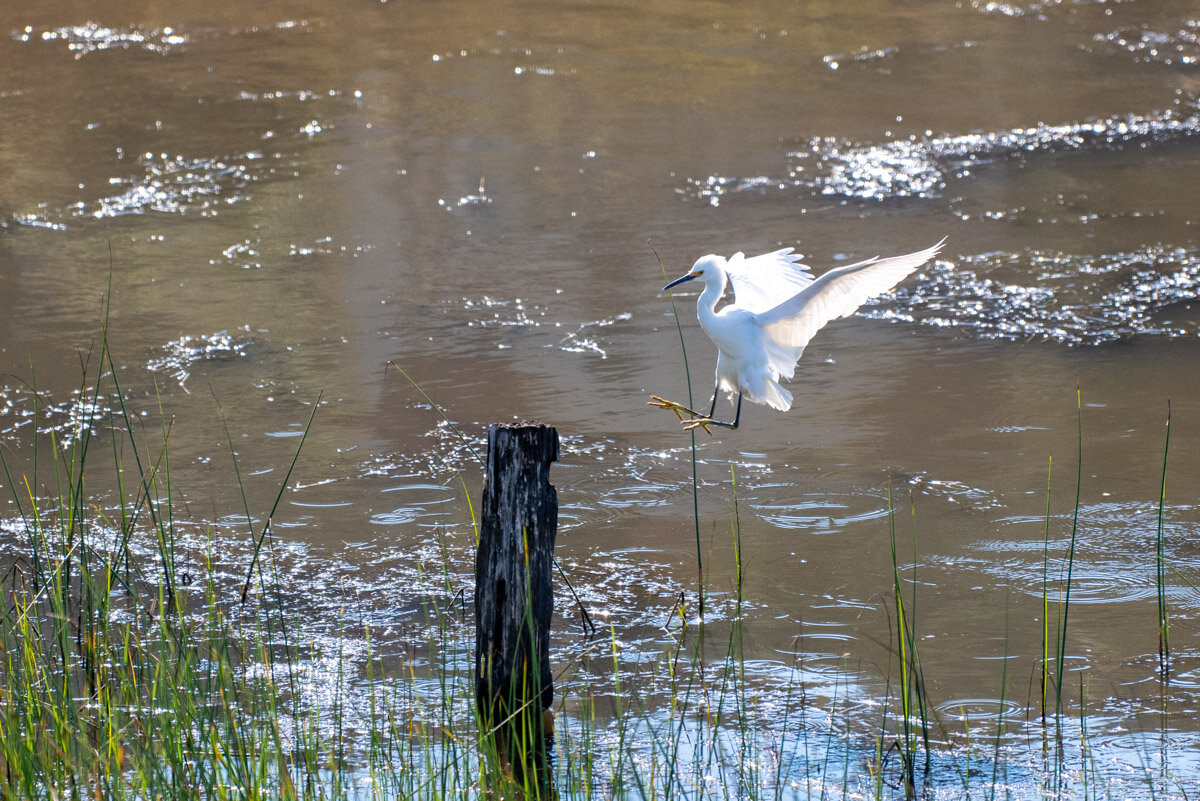
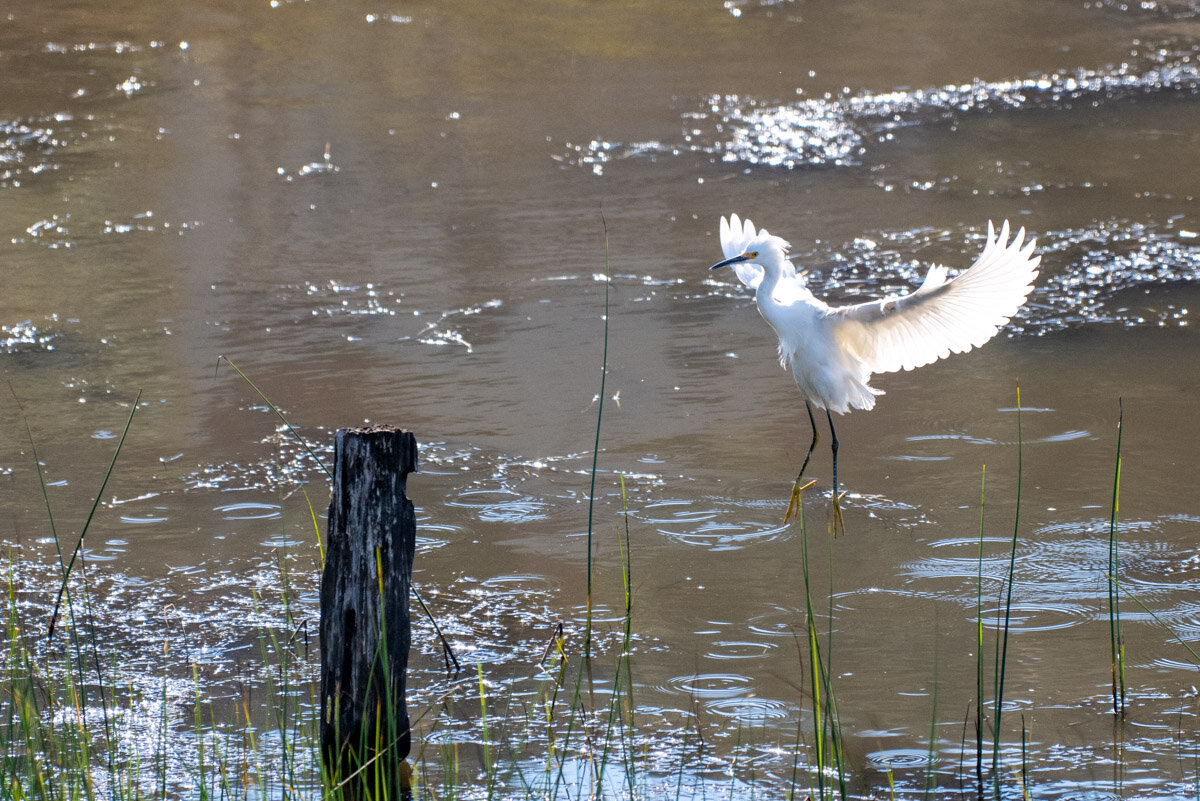
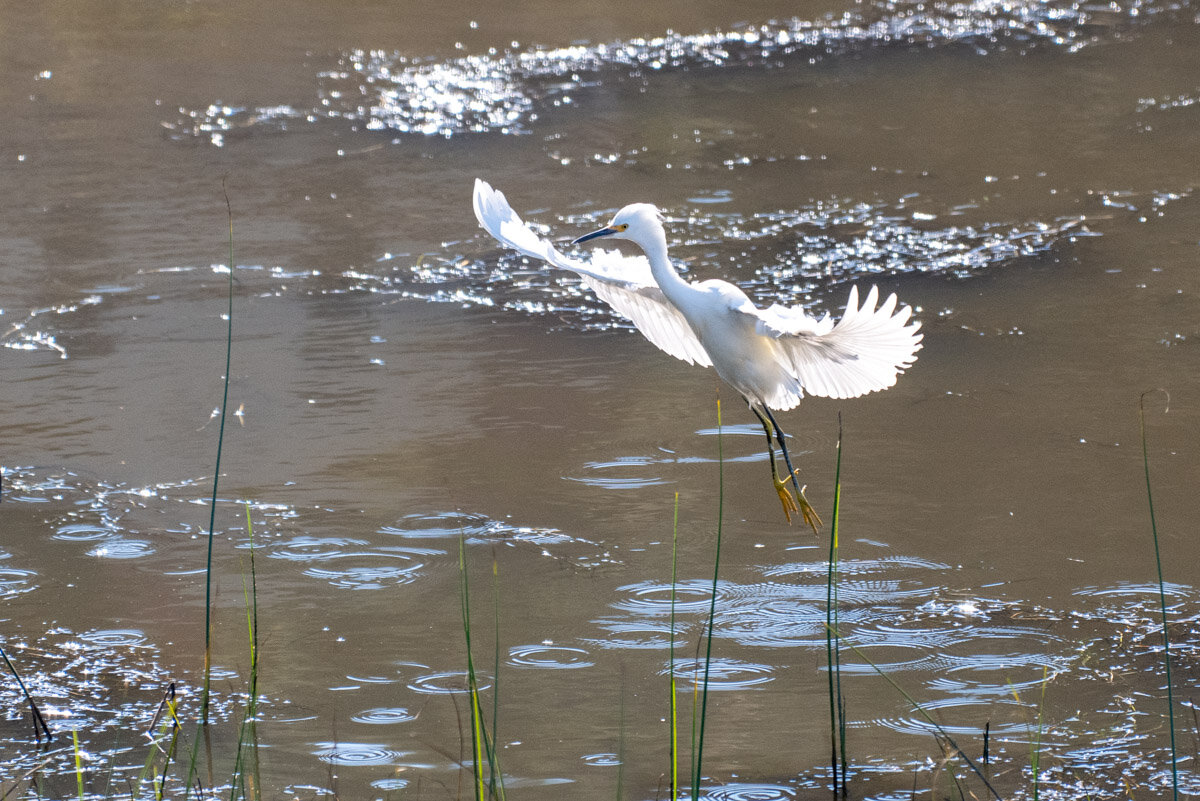

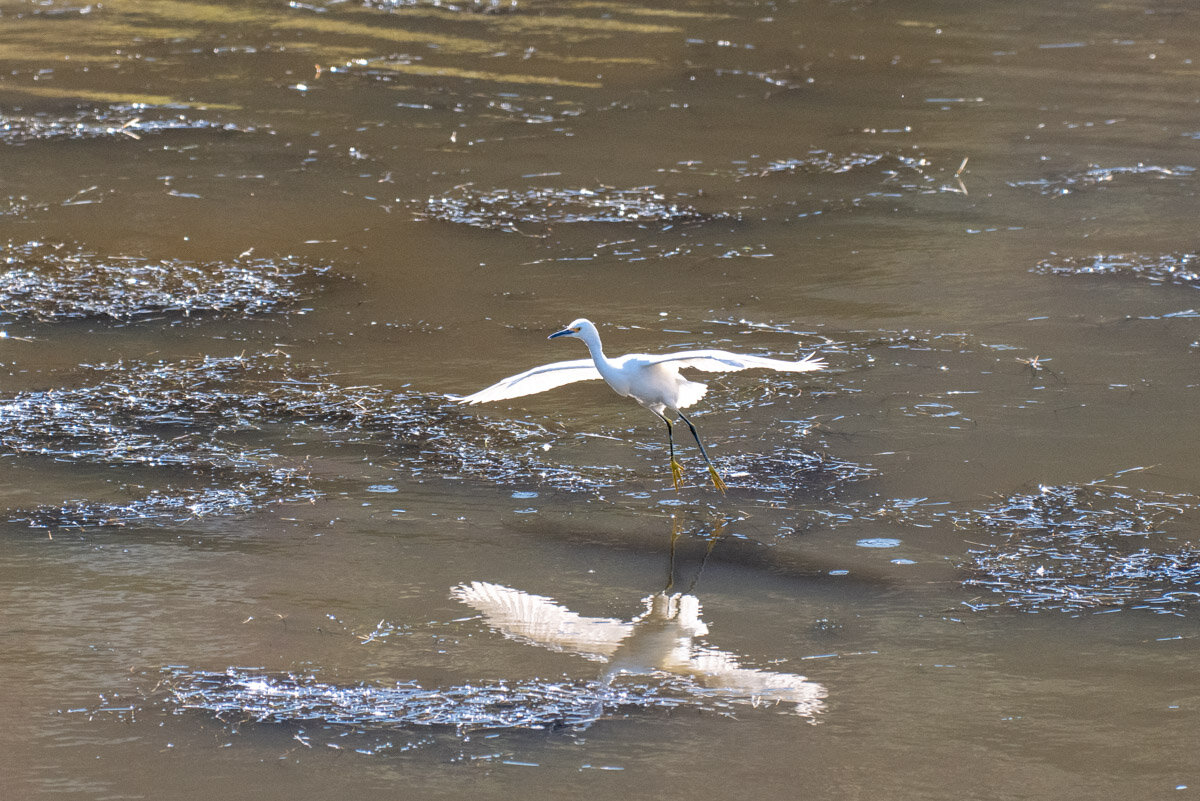
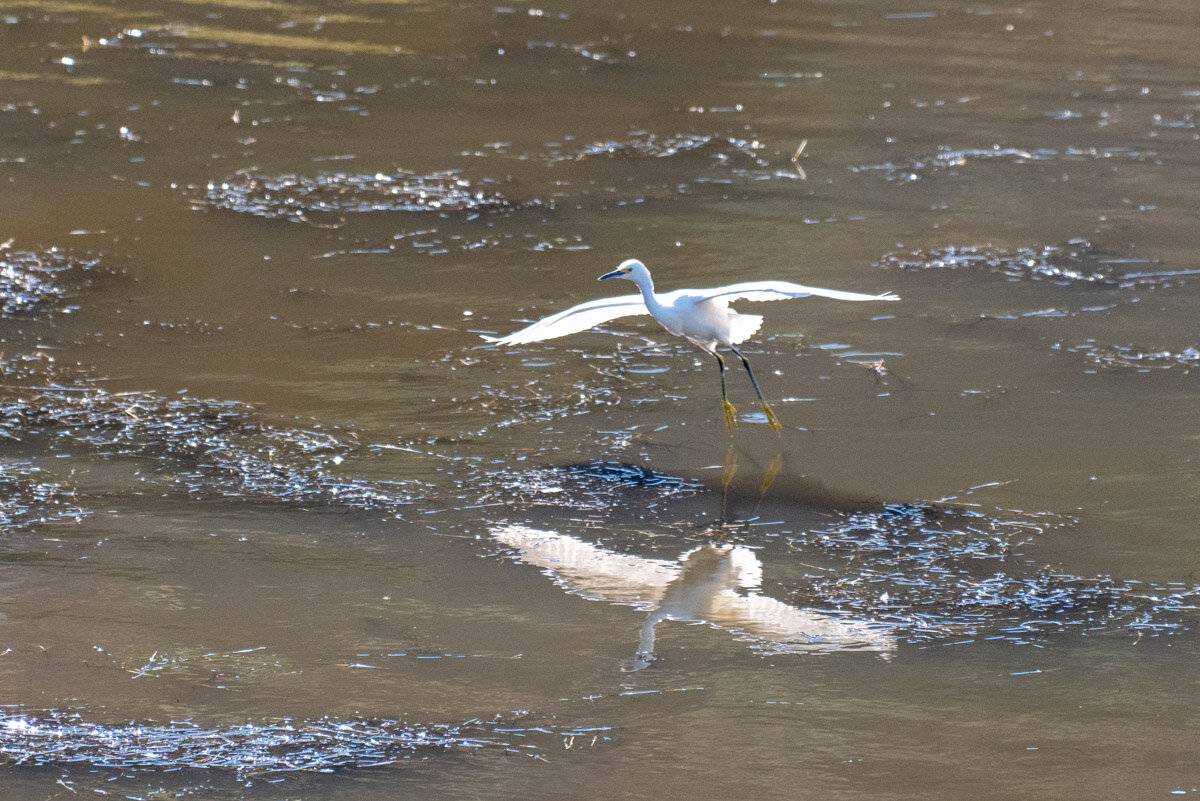
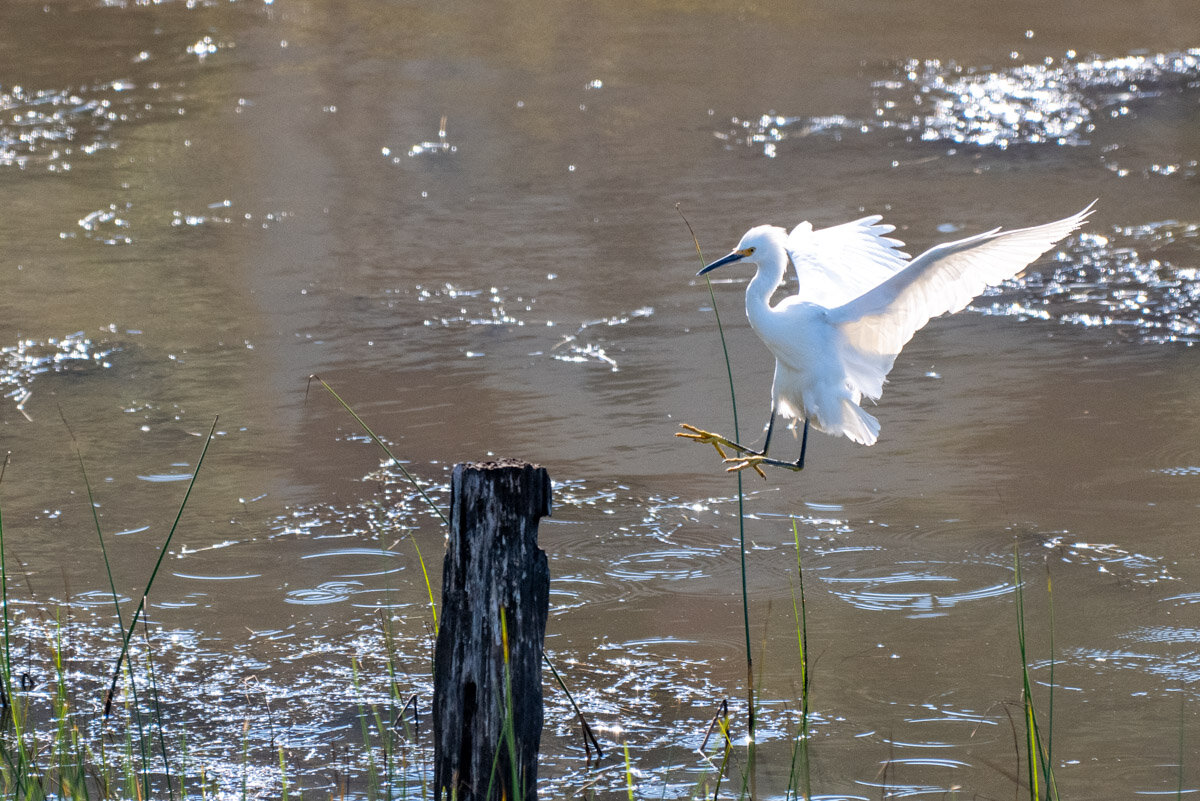
Although I did not get to test the AF-C as much as I would have liked, I was pleasantly surprised with the performance in this egret sequence (and in addition, the great blue heron at the top of this post) which had a busy, high-contrast background that typically poses challenges for many camera focus systems. Although a heavy-handed crop was needed with the 70-200 F/4 lens here, I was nonetheless pleased that these were all acceptably sharp at 1:1. I used single point focus for these images.
Stabilization
Panasonic appears to have taken what they have learned from designing micro-four thirds cameras and implemented it here with their full-frame offering, which is very good news. That is to say the OIS performance appears to be excellent, with acceptably sharp handheld shots all the way out to 200mm @ 1/20th or even lower being completely possible. I found that I could shoot all the way down to 1/5th of a second at 200mm and still get a few acceptably sharp handheld shots in a sequence. Although I have not done lab testing, I have a strong hunch the OIS implementation in the Panasonic is the best in this class of camera. I can envision situations in the dark forest with relatively stationary subjects like perched birds where having this incredible OIS would translate to sharp and noise free shots without a tripod – this is awesome. The OIS also enables some very stable video performance in my limited testing. While OIS does not replace proper settings and technique, it’s nice that blur from hand shake is one less thing to worry about with the Panasonic.
Tripods are not really necessary even to achieve very high levels of sharpness and resolution.
Crop of the above image
Image Quality
The image files coming out of the S1R are nothing short of spectacular. That is to say that even with a lens that I’d consider too short for most wildlife photography, the results are pleasing. The color rendition and sharpness is very good out of this lens and body combination. I have no complaints about the image quality. Shadow recovery is excellent, as demonstrated by the example below:
Original, underexposed and backlit image on top, and shadow recovered image on the bottom.
During my foray with the camera, I unfortunately did not have the time to test the multi-shot high resolution mode using a tripod. This mode has limited utility for wildlife and really meant for static subjects.
Compared to the Competition
For my recent Madagascar trip, I rented the Sony A7R IV and 200-600 lens, and prior to that, I rented the Nikon Z7 to try with my Nikon lenses, and so I have a pretty good basis for comparison to the Panasonic. Since I no longer have all of the cameras in front of me, I must admit that my experiences are not supported by empirical testing and are purely observational. All three of these systems offer their pros and cons, and each are outstanding pieces of gear in their own right.
I am a big fan of this dSLR throwback feature – a top illuminated LCD. Just like my D850, I really appreciate being able to see and change my settings at a glance in both light and dark conditions – something not possible with the Sony A7’s without using the back LCD or viewfinder. Wildlife photography is all about being prepared for anything – and this feature helps to do that.
I think that in a lot of ways, Panasonic is in a similar position that Sony was when they first introduced their mirrorless Alpha series cameras many years ago. In the beginning, Sony’s full-frame mirrorless wasn’t really considered a serious option by many pros and enthusiasts, and was often getting bashed in online articles and in the forums. There is no question that Sony had to improve their products to prove themselves as delivering a good product that the masses were willing to use, and in many ways they have achieved that. Sony has since addressed a lot of issues with their cameras (battery life and weather sealing, for example), however, some of the issues that plagued the system from the beginning still remain, in my opinion. They still use an arcane menu system that is confusing and hard to navigate, and the touchscreen implementation is nowhere near as comprehensive and useful as basically all other brands. One of my biggest gripes with the Sony has to do with responsiveness-particularly in playback mode. While some improvements have been made over time, Sony cameras (even including the “speedy” a9) continue to feel just a touch laggy to me. With the Sony, everything from changing focus point, to changing shutter speed, to cycling through images during playback, feels less responsive than most competing models. I have always experienced a bit of annoying lag on every one of their cameras. The S1R, in comparison, has absolutely no lag when doing any of these things. In fact, the S1R has to be one of the most responsive cameras in all matters of operation that I have ever used.
One major pro of the Sony system was battery life. It’s easily twice that of the S1R in use. With the Sony it is pretty easy to go a full day on one battery and not really worry about it. No such luck with the Panasonic. Good thing both cameras offer USB-C charging.
The Nikon Z series are another solid offering. The bodies feel great, are much smaller, and the ergonomics are well though out and very “Nikon-like”. General operation of the Nikons feel responsive and the autofocus is accurate. For me, the Nikon was an excellent performer and the image quality was spectacular. Still, I had some issues with the camera. I was personally frustrated with the Nikon’s slower performance with adapted F-mount glass. I am also frustrated that Nikon did not release a true battery grip with a shutter release, as I often use my cameras in portrait orientation and want the most battery life possible. The OIS is probably second to Panasonic, which is to say it is very effective, but not quite in the same league. Battery life of the Nikon was very good but not quite on par with the Sony.
It’s important to note that most of the weight of the camera system is with the lenses, and so when comparing between gear the body is only one part of the equation. Choosing the Panasonic also means getting a full-size ergonomic body, whereas normal hands can’t hold a Sony (and to a lesser extent, Nikon Z) camera without the pinky falling off the bottom. Once the grip and battery are added to the Sony Kit, the weight disparity becomes less, but there is no denying here that Panasonic has the heaviest system.
I do not have a lot of quality experiences with the EOS R other than brief handling in a store, but I can say right off the bat that I dislike the lack of a proper AF-selector joystick which turned me off from the camera from the beginning. I think there are a lot of things to like about the Canon system, including the awesome lens catalogue and great AF performance, but for whatever reason, I can’t get over the lack of a proper AF-Selector in a pro/enthusiast level body, so it’s not really on my radar.
Conclusions
In my quest to test the latest full-frame mirrorless offerings, I’ve rented a few different bodies, but this is the only one I really felt compelled to review because the number of reviews of this camera out there is so small. Panasonic may not have the brand recognition of the big names in photography, but it’s important to note that they’ve been in the mirrorless camera game longer than anyone.
Probably the biggest drawback of the Panasonic full-frame mirrorless system right now for wildlife photographers is the lack of native telephoto zoom or prime lenses. For that reason, it is hard to recommend it as a primary wildlife-oriented camera until that happens. It is nonetheless reassuring to see that Panasonic is staying on schedule with their roadmap of lens releases. A super telephoto lens is on Panasonic’s 2020 roadmap, and I hope that along with it we see a sports oriented body that optimizes autofocus and burst rate.
As for alternative L-Mount Alliance lenses, I don’t think Leica lenses are an option for most, given their huge price tags, and native Sigma L mount glass is also lacking in the telephoto department. Fortunately, a 70-200mm F/2.8, which can be one of my most used lenses on some wildlife trips, will start shipping in January. This will offer 400mm at F/5.6 with the 2X teleconverter, granted most lenses typically suffer with the use of 2X teleconverters and a 400mm is really a bare minimum for a lot of skittish wildlife shooting.
Big, fast telephoto primes, like a 500mm F/4, do not seem anywhere on the horizon unless Sigma converts their 500mm F/4 to L-mount, or unless we get a solid adapter that allows autofocus, e.g., with L-Mount or Canon EF glass. For the serious enthusiast, a lack of lenses in this range at the time of writing this article could justifiably push one into DSLR or Sony territory.
Despite the current lens limitations, it is fortunate that Panasonic has not held back in delivering an extremely well-rounded package. The S appears to be a robust system ready to take on abuse, and seems very adaptable to different shooting styles. It is an incredibly capable hybrid camera with, in my humble opinion as primarily a stills shooter, among the best video implementation of a full-frame mirrorless camera with its outstanding OIS and ease of use.
For me, Panasonic also got a lot of the little things right, like a proper touch screen implementation, incredible EVF, a shoulder LCD with settings readout, a proper AF-point selector, and USB charging that make the S1R a pleasure to use. While the AF may not be as sure-footed as the DSLR, my first impression is that it seems to be much more capable than some naysayers might have you believe.
I do hope that Panasonic pays more attention to weight in the future and strives to reduce the weight of the body and future lenses – the dimensionally smaller and lighter Leica SL2, which undoubtedly shares a lot of parts with the S1R, is a testament to what is possible. If one can get along with the extra bulk, I do think that Panasonic has a compelling system provided some patience with their lens offerings. In many ways the Panasonic feels like a next-generation product compared to the competition, and while it may not be ideal for wildlife enthusiasts right now, it holds strong potential.
Pros
Solid build quality
Shoulder LCD readout of settings and illuminated buttons
Impeccable touchscreen implementation
Camera operation is responsive and fluid
EVF is outstanding
Shutter is particularly well damped and quiet
Image quality is outstanding
Cons
Battery life is disappointing even though the batteries are dimensionally large
EVF resolution drops when using C-AF
Burst modes are not ideal for fast action
At time of writing, there are no native super telephoto lenses
Introductory price was higher than competitors


